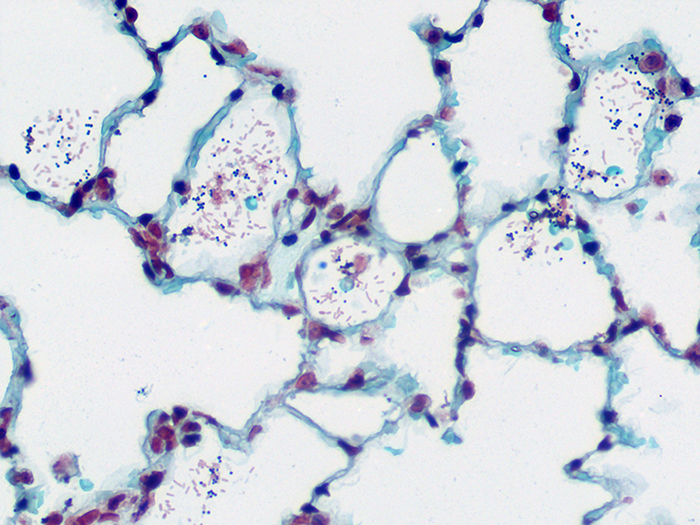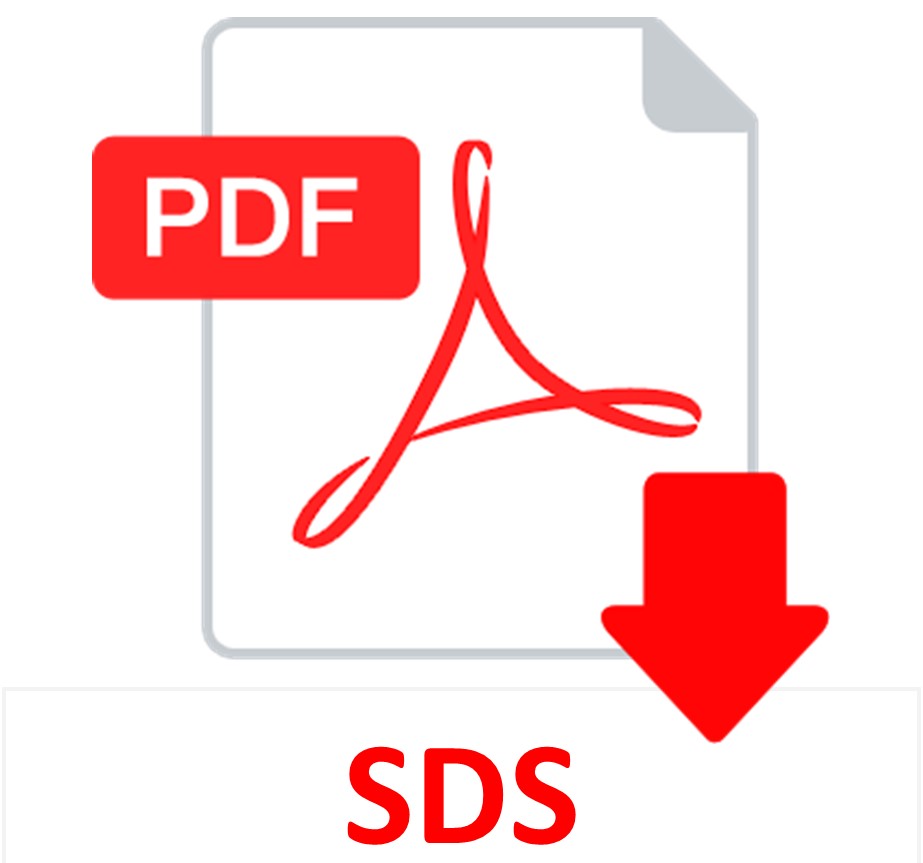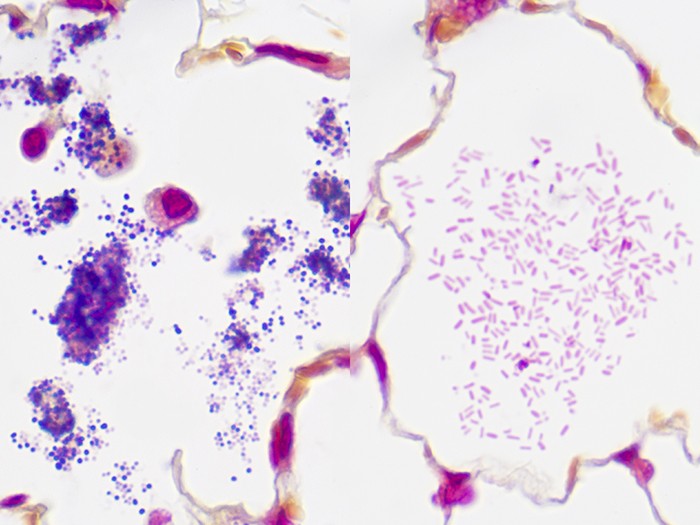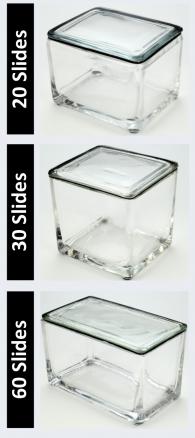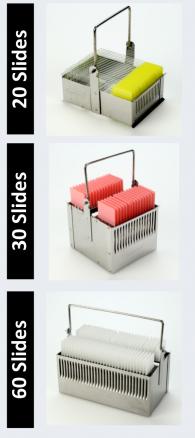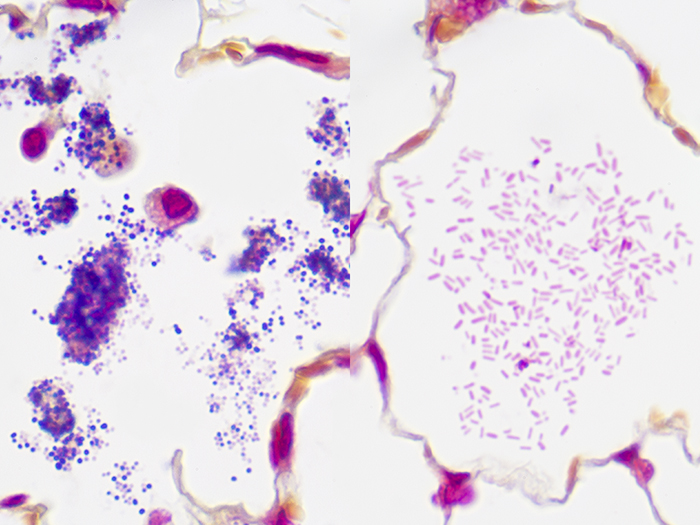Gram, Hucker-Twort Stain Kit
Stains gram-positive and gram-negative bacteria without the use of picric acid. The Fast Green secondary counterstain provides the green background for clear detection of any red gram-negative bacteria present.
-
- Shelf Life is 2 Years
GRAM, HUCKER-TWORT STAIN KIT INCLUDES:
| Part 9125A | ||
| Solution A: | Crystal Violet-Oxalate Stain, Alcoholic | 250 ml |
| Solution B: | Iodine, Lugol’s, Aqueous | 250 ml |
| Solution C: | Neutral Red Stain 1%, Alcoholic | 125 ml |
| Solution D: | Fast Green Stain 1%, Alcoholic | 50 ml |
COMPLIMENTARY POSITIVE CONTROL SLIDES: Enclosed are two complimentary unstained positive control slides for the initial verification of staining techniques and reagents. Verification must be documented by running one Newcomer Supply complimentary positive control slide along with your current positive control slide for the first run. Retain the second complimentary control slide for further troubleshooting, if needed.
Individual stain solutions and additional control slides may be available for purchase under separate part numbers.
Additionally Needed:
| Xylene, ACS | Part 1445 |
| Alcohol, Ethyl Denatured, 100% | Part 10841 |
| Alcohol, Ethyl Denatured, 95% | Part 10842 |
| Acetone, ACS | Part 10014 |
For storage requirements and expiration date refer to individual bottle labels.
APPLICATION:
Newcomer Supply Gram, Hucker-Twort Stain Kit is a simple, rapid procedure for staining gram-positive and gram-negative bacteria without picric acid. The Twort Stain combines Neutral Red and Fast Green, for clear detection of red gram-negative bacteria with a green counterstain.
METHOD:
Fixation: Formalin 10%, Phosphate Buffered (Part 1090)
Technique: Paraffin sections cut at 4 microns
Solutions: All solutions are manufactured by Newcomer Supply, Inc.
All Newcomer Supply Stain Kits are designed to be used with Coplin jars filled to 40 ml following the provided staining procedure. Some solutions in the kit may contain extra volumes.
PRESTAINING PREPARATION:
-
- If necessary, heat dry tissue sections/slides in oven.
- Filter Solution A: Crystal Violet-Oxalate Stain, Alcoholic with high quality filter paper.
STAINING PROCEDURE:
-
- Deparaffinize sections thoroughly in three changes of xylene, 3 minutes each. Hydrate through two changes each of 100% and 95% ethyl alcohols, 10 dips each. Wash well with distilled water.
-
- See Procedure Note #1.
-
- Stain in freshly filtered Solution A: Crystal Violet-Oxalate Stain, Alcoholic (Step #2) for 30 seconds.
- Rinse quickly in distilled water.
- Mordant in Solution B: Iodine, Lugol’s, Aqueous for 20 seconds.
- Rinse quickly in distilled water.
- Decolorize individually with Acetone, ACS (Part 10014); 2 quick dips.
-
- Or until tissue remains light gray.
-
- Rinse quickly in distilled water.
- Prepare fresh Twort Stain; combine and mix well.
-
- Solution C: Neutral Red Stain 1%, Alcoholic 9 ml
- Solution D: Fast Green Stain 1%, Alcoholic 3 ml
- Distilled Water 30 ml
- Use within 30 minutes.
-
- Stain in fresh Twort Stain for 2 minutes.
- Rinse quickly in distilled water; carefully blot dry.
- Agitate slides quickly in clean Acetone, ACS to remove excess stain and dehydrate; do not use any alcohols.
-
- The use of alcohol will remove Neutral Red.
-
- Clear in three changes of xylene, 10 dips each; coverslip with compatible mounting medium.
- Deparaffinize sections thoroughly in three changes of xylene, 3 minutes each. Hydrate through two changes each of 100% and 95% ethyl alcohols, 10 dips each. Wash well with distilled water.
RESULTS:
| Gram-positive bacteria | Dark blue |
| Gram-negative bacteria | Red |
| Cytoplasm and red blood cells | Shades of green |
| Nuclei | Red |
PROCEDURE NOTES:
-
- Drain slides after each step to prevent solution carry over.
- If using a xylene substitute, closely follow the manufacturer’s recommendations for deparaffinization and clearing steps.
REFERENCES:
-
- Bancroft, John D., and Alan Stevens. Theory and Practice of Histological Techniques. 3rd ed. Edinburgh: Churchill Livingstone, 1990. 290-292.
- Culling, C.F.A. Handbook of Histopathological and Histochemical Techniques. 3rd ed. London: Butterworth, 1974. 393-395.
- Twort, F.W., “An Improved Neutral Red, Light Green Double Staining for Animal Parasites, Microorganisms and Tissues”. Journal of State Medicine (1924). 351.
- Modifications developed by Newcomer Supply Laboratory.


